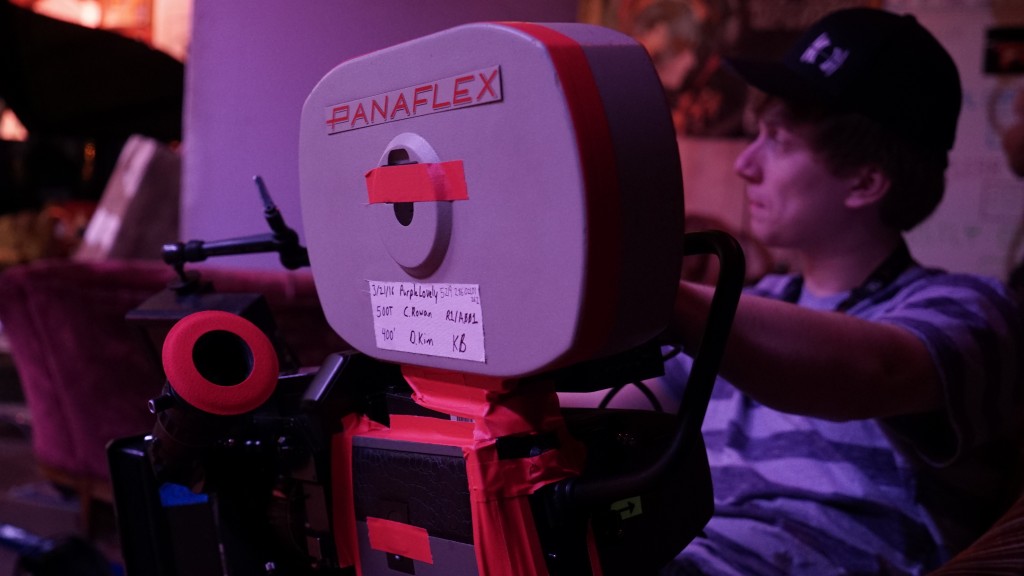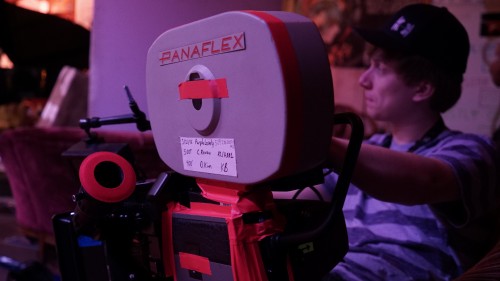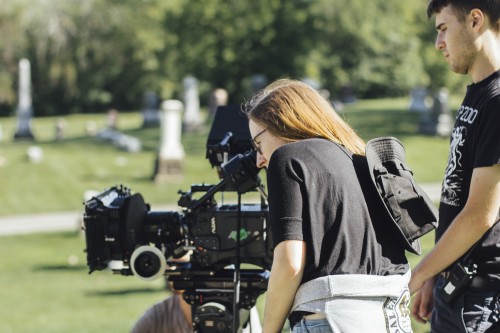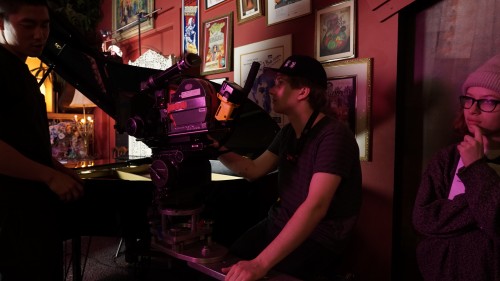
Film vs. Digital: Really?

Panaflexing with the Panavision Panaflex 35mm
Firstly, why does it have to be a competition, am I right? It’s always film versus digital, digital versus film. Is film dying? Is digital destroying cinema as we know it? Why, I ask you, do we have to pit these things against each other? Now that I’ve had the pleasure to work in both mediums, I feel like I should address the “film vs. digital” argument.
I want to first start by saying that, like in all art, the medium in which the art comes to fruition has to work within the artistic vision and must fit the mood, tone, story, etc. of the piece. Like a painter who decides the type of canvas, brush and paint, a filmmaker needs to know what camera and format they wish to create on. The technical object is a means to an end, certainly, but it must fit within the confines of the art piece as a whole.

Filming my thesis on the beautiful ArriAlexa
I’ve had the pleasure of working with many types of cameras and on many formats of filmmaking, from low-end home point-and-shoot cameras to high-end, industry-standard film and digital cameras. One thing I’ve learned on my journey to become a filmmaker is that yes, camera is important, but it’s not as important as the story, and therefore it should work with the story, not just act as a tool to get you the most beautiful, the crispest, most professional image possible.
For my thesis, my ideal choice of camera was the Panavision Panaflex 35mm film camera. Restricted by my budget, I was unable to shoot on film. I knew the filmic look of 35mm was the best look for my story, but how was I going to achieve it on a digital camera? Through research and discussions with my producer and cinematographer, I was offered endless digital options that might provide the look that I so desperately craved. We ended up filming on the ArriAlexa cinema camera (digital) to achieve the closest look we could to film.
When deciding what camera to use, it’s important to look at all the possibilities. Another film I have in pre-production would achieve it’s best look if shot on 35mm. Again, restricted by budget, myself and my co-director are working with our cinematographer to adjust our visual strategy to consider options in the digital realm. A promising option is to shoot on a Red One, but to use 16mm film lenses from the ’70s to help us produce a grittier, more intentionally old feel to the picture.

ArriFlex SR High Speed 16mm for all the nitty gritty violence shots on my most recent project.
Other films I have shot lent themselves better to a crisper, more digital look. Again, these choices always come back to story. Having the right tools and knowing what each option can offer is where the strength of the filmmaker lies. It isn’t about which format is better; it’s about which format fits the story better. Story should always come first, after all.
